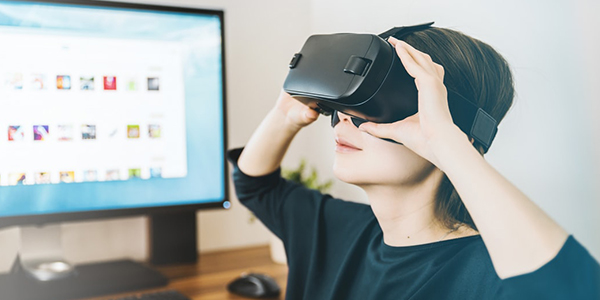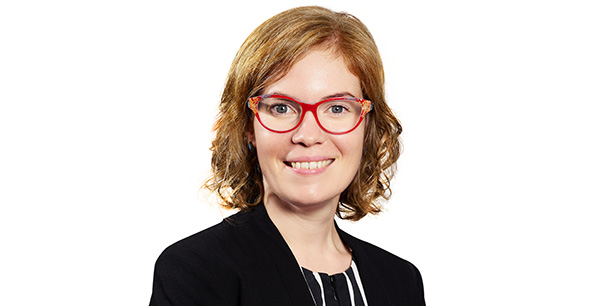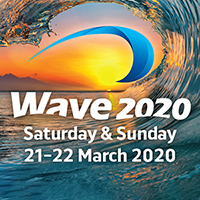1:30min

Journalist
Studies on the effects of virtual reality on myopia have so far had mixed results, with some suggesting the technology may cause transient myopic shifts and visual symptoms in children, while others suggest it may have beneficial effects in young adults, Brisbane optometrist Dr Kate Gifford says.
Dr Gifford, a myopia expert, will tell WAVE 2020 in Fremantle, March 21-22, that despite virtual reality or VR being a research area in its infancy, children’s symptoms should be monitored during and after use. She will speak on Sunday about the visual environment and myopia, and myopia management clinical decision trees.
‘There haven’t been any longitudinal studies to investigate virtual reality and myopia or its effects on visual development, only short-term studies on visual functional effects and choroidal thickness changes in children and young adults that have to be extrapolated to theories about how VR could influence myopia,’ Dr Gifford told Optometry Australia.
‘Thus far these studies show mixed results. Two studies have indicated that children may be sensitive to visual symptoms from VR use, like “feeling tired,” “feeling sleepy,” “difficulty concentrating,” and “sore/aching eyes” but these quickly resolve on cessation.
‘Children may be more sensitive to visual disturbances from VR – the mismatch between vergence and accommodation systems which occurs when vergence is stimulated to change, to give a sensation of depth, but accommodation is held steady.
‘Transient myopic shifts have also been noted (in children using VR) although with minimal influence on other oculomotor measurements.’
Dr Gifford said it was too early to tell if warnings were needed on VR devices about effects on vision or limiting use.
‘I think it might be too early to tell, but we should monitor children’s symptoms during and after use, and of course more research needs to be done to understand how VR could influence the developing visual system,’ she said.
Improved flexibility in vergence system
However, Dr Gifford said that VR use in young adults had shown improved flexibility in the vergence system after use compared to traditional computer (PC) game play, which may indicate a beneficial effect of VR.
‘In support of this, transient choroidal thickening has also been measured after VR use in young adults, which is a currently presumed mechanism that may indicate a beneficial localised response of the eye to a stimulus protective of myopia. But it’s really a research area in its infancy.’

Dr Kate Gifford
In terms of myopia development, the biggest risk factor seemed to be not enough time spent outside, she said. Several Australian-based studies had shown that physical activity and even higher volumes of near work were less influential on myopia development than the strongly positive benefits of at least 90 to 120 minutes a day of time spent outdoors.
‘Once a child becomes myopic and we’re then thinking about myopia progression, the story may be a little different and the complexity of the visual environment – near work habits and outdoor time – may all come into play,’ she said.
‘As VR becomes more commonplace, it still may not end up moving outside of the home or the classroom, simply because it’s harder to walk around with it than omnipresent smartphones.
‘There’s already a lot of information and options available for educational VR (eg. http://immersiveit.com.au/vr-technology/) and even examples of its use in Australian schools. (ie https://education.nsw.gov.au/teaching-and-learning/school-learning-environments-and-change/school-journeys/virtual-reality-in-the-classroom
‘The greater potential for the next immersive, omnipresent technology is augmented reality, which mixes the real world (so you can actually see where you’re walking) with virtual overlays, data and images. Examples of this are the Google Glass.
Boneless humans staring at screens?
‘I sometimes wonder if we’ll all end up like the blobby, boneless humans in the Pixar movie Wall-E, who slurp on nutritional shakes all day long, sitting in mobile chairs and staring at a screen right in front of their eyes. Then I think of the recent movie (and 2011 book) Ready Player One where humanity plugs into VR to escape dystopian reality.
‘If this is the case, will we need our eyes anymore? Hopefully we will, so us optometrists will still have our important work to do!’
Dr Gifford said one hypothesis paper (no research data), discussed how changing the image across the field of vision could change inputs on the peripheral retina, and also how bright illumination close to the eyes could possibly provide a positive stimulus, both of which could protect against myopia. https://www.sciencedirect.com/science/article/pii/S0306987718308193?via%3Dihub Read also a media release about this paper.
Dr Gifford is a clinical optometrist, peer educator on myopia and Clinical Management Guidelines Committee Chair with the International Myopia Institute. She is also a Visiting Research Fellow – Queensland University of Technology School of Optometry and Vision Science and with her partner optometrist Dr Paul Gifford has developed several myopia tools and websites to assist optometrists: www.myopiaprofile.com, Facebook group/Myopia Profile, www.mykidsvision.org

Optometry Western Australia’s annual state conference – Western Australian Vision Education, also known as WAVE 2020 at The Esplanade Hotel, Fremantle from March 21-22 offers a stellar range of speakers discussing interesting and relevant topics for optometrists, and up to 40.5 CPD points including 27 therapeutic points. Accreditation for New Zealand 6.5 CPD (4 Gen + 3 Glau) and if using WAVE for UK registration with The General Optical Council contact j.martindale@optometry.org.au
Saturday morning will feature four x 1 hr clinical workshops, which delegates rotate through each until lunchtime. After lunch, all sessions are 30-minute lectures, with optional assessment. The day closes at 5.35pm followed by a Poolside Sundowner until 7.30pm. Sunday’s program consists of 30-minute lectures, with optional assessment. There is also a trade show.
- The AHPPC statement says:
‘The Australian Government considers the following countries to be at higher risk for COVID-19:
• Mainland China - Iran
- Italy
- South Korea
 ‘If you are returning from these countries, you need to monitor your health for the next 14 days. If you are returning from mainland China or Iran you should self-isolate for 14 days.
‘If you are returning from these countries, you need to monitor your health for the next 14 days. If you are returning from mainland China or Iran you should self-isolate for 14 days.
‘If you are returning from Italy or South Korea, and you work as a healthcare worker or as a residential aged care worker, you should not attend your regular work for 14 days.
‘OWA will actively review delegate and trade registrations and issue refunds upon provision of evidence of having travelled through the listed regions if an individual is unable to self-quarantine and be deemed asymptomatic for the recommended period before the conference begins.
‘OWA’s COVID-19 precautionary procedures are in line with guidance from the World Health Organization and the Australian Health Protection Principal Committee (AHPPC).
‘For example, before and during WAVE 2020, conference attendees will be given health tips and information about safety measures. OWA notes that certain travel restrictions remain in place at the time of writing this update.
‘OWA and the Fremantle Esplanade Hotel endorse the following procedures:
• Increased availability of hand sanitizing stations.
• Increased cleaning and disinfection process across all high-volume touchpoints (catering areas, surfaces, handrails, restrooms, entrances/exits, etc.) along with the use of cleaning/sanitizing materials and products.
• Increased onsite medical support
• Awareness campaign via online and onsite information and signage
• Availability of sanitizing and disinfection materials for public use
• Create an environment to promote a ‘touch-free’ exhibition and conference:
o Communicating the adoption of a ‘no-handshake policy’
o Reduce/eliminate business card exchanges
‘OWA will continue to provide updates to the WAVE 2020 community.’
Tagged as: Myopia, WAVE WA